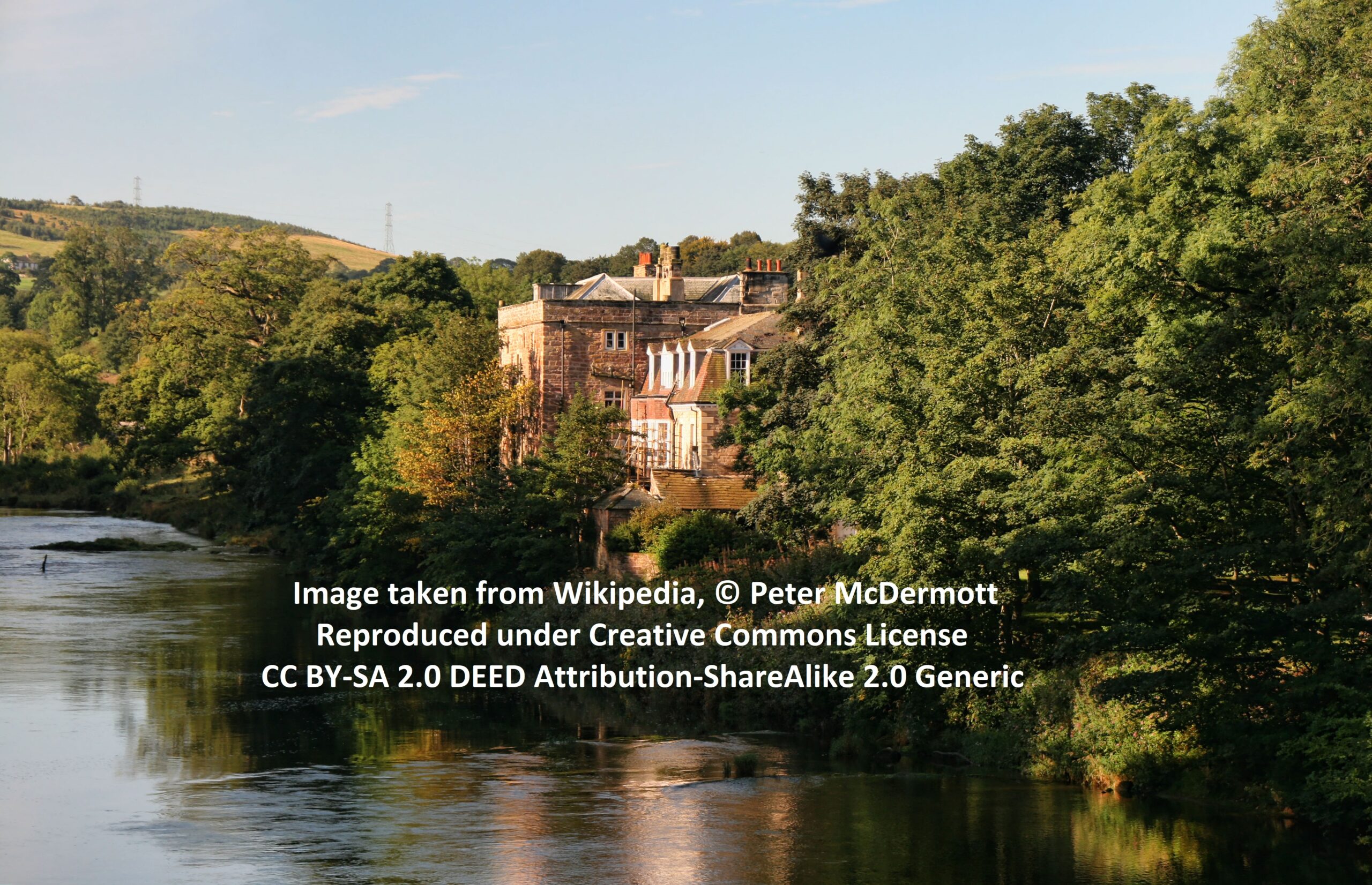Armathwaite Castle

Armathwaite Castle Details
Armathwaite Castle is a renovated mansion built around a tower house of the 15th century, extended in the 17th, 18th and 19th centuries. The castle can just be seen from a nearby bridge, and sits on a raised river bank.
- Closest To: Armathwaite, Kirkoswald, High Hesket
- Access: No Access
- Grid Reference: NY50574587
Armathwaite Castle is a privately owned and occupied tower house, extended multiple times to form an extensive country house. It sits on the west bank of the River Eden within private grounds, and may only be glimpsed at a distance from the Eden Bridge. The oldest part of the building is believed to date to the 15th century, and was built for the Skelton family, who were locally important gentry, retaining the castle until its sale in 1712 to William Sanderson. This building is a massive quadrangular tower, constructed from the local red sandstone, and with extremely thick walls. John Skelton obtained a number of leases of land in and around Armathwaite in 1445 and 1447, the latter (described as Armathwaite Bank) was of 100 acres and probably is the part that the castle was erected upon. In 1458, he died, and was succeeded by his son, another John Skelton, who received a heritable grant of the 100 acres in 1461 from King Edward IV. Given that his father only held a lease, it seems more likely that it was this second John who had the tower erected. This John was followed by a third John, who lived long enough to see his son die in 1544, and his grandson William married before William eventually succeeded him in 1532.
At this point the Skeltons of Armathwaite were respectable and prominent members of the local gentry, John having held the position of Sheriff of Cumberland, and as far as we know, the seat at Armathwaite remained the family home, William was followed by Lancelot in 1585, and Lancelot by John in 1623. John was followed by two Richards and another John, who sold off the estate in 1712. This had throughout been a succession of father to son, and from the dating of the building, we can assume that the Skeltons were responsible for the erection of the first extension to the old tower in the late 17th century. Although it is not certain, it seems likely to have been the last of the family, Richard, who was responsible, since he and his wife had a huge family of ten sons and six daughters! In 1727 the new owner, William Sanderson, bequeathed the castle to his younger brother Robert, who was an enthusiastic collector of antiquities, filling the castle before he died in 1741. Eventually the castle passed to his Millbourne relations, and then to the earl of Lonsdale, but by 1892 it was in poor repair, requiring renovation. It was converted into flats at a later date, but has since been converted back to a single residence.
Become a supporter of my work to access a more detailed history